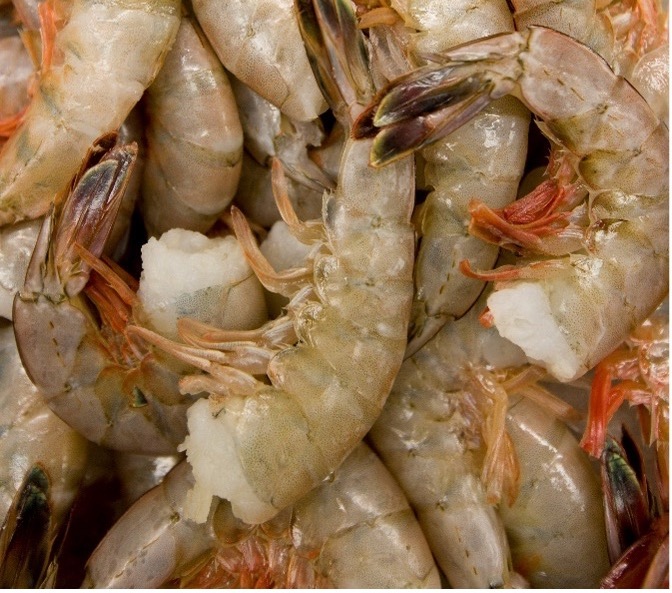Seafood in School Lunches for Improved Diets and New Markets – Technologist
This blog is part of a series called Fish-nomics , examining crucial topics concerning seafood industry matters from an economist’s perspective.
Image courtesy of Tyler Jones, UF/IFAS.
In 2022 the United States Government Accountability Office (GAO) issued a report on seafood in school lunch programs. The report found that between 2014 and 2019, the USDA’s National School Lunch Program’s (NSLP) seafood purchases only accounted for 1.5% of total animal protein purchased by the program. On average, the NSLP provided U.S. students with only 3 ounces of seafood per year while the USDA’s own Dietary Guidelines for Americans recommend school-age children consume 4-10 ounces of seafood per week depending on age.
Improving access to seafood for children through the NSLP represents an opportunity to improve student health and increase demand for U.S. produced seafood. Increasing the percentage of NSLP purchases of animal protein from seafood to 15% would require the USDA to buy 55.7 million more pounds of U.S. produced seafood per year.
The need for more seafood in school lunches is highlighted by the fact that USDA data indicated that most U.S. school-age children do not eat the recommended amounts prescribed by the Dietary Guidelines for Americans. Seafood is an important source of key nutrients, minerals, and vitamins including omega-3 fatty acids, vitamins B12 and D, selenium, zinc, and iodine. Studies regarding these nutrients, minerals, and vitamins have shown benefits including reduced risk of cardiovascular disease, certain cancers, cognitive decline (including Alzheimer’s disease and dementia), and depression, while potentially improving immune function, bone health, eye health, and fetal and infant development.
The USDA’s Strategic Plan indicates that one of the Agency’s goals is to support and encourage healthy eating by working with schools to improve access to nutritious food options, like seafood. However, to do this the USDA will need to alert buyers for NSLP of the availability of new seafood products. The GAO report involved interviews with 20 of these administrators as to why they did not attempt to include more seafood in school lunches through the NSLP. The three most commonly cited concerns included: worries about seafood safety, student preferences for other animal proteins, and availability of seafood.
Educational programs for administrators, parents, and students could decrease concerns about seafood safety and change preferences for seafood, while educational programs specifically for administrators could increase the variety of seafood offered through the NSLP. Between 2014 and 2019, the only seafood products offered through the program were Alaska pollock, canned tuna, and catfish purchased from a total of 11 vendors. While these are good seafood choices, a wider variety of options including shrimp and salmon, the two most consumed types of seafood in the U.S., could decrease worries about student preferences for other animal proteins and increase seafood uptake in the NSLP.

Image courtesy of Tyler Jones.
Including shrimp in the NSLP would increase seafood in student diets and bolster one of America’s largest fisheries. Shrimp is by far the most consumed seafood type in the U.S. and accounts for 29% of total U.S. seafood consumption, and school-age children are likely to be familiar with and willing to eat shrimp through the NSLP. Introducing shrimp into the NSLP could improve the willingness of administrators to try adding other seafood options to school lunches and make children more willing to try other types of seafood both at school and at home.
Furthermore, including U.S. wild-caught shrimp in the NSLP would provide another potential market for the fishery. The U.S. shrimp fishery is one of the five largest commercial fisheries in the U.S.; however, cheaper imported shrimp has negatively impacted the fishery and the coastal communities that rely on the fishery. If the percentage of NSLP animal protein source purchases from seafood increased from 1.5% to 15%, and just half of the increased purchases were U.S. wild-caught shrimp, the USDA would buy 27.9 million more pounds – or 10% of all shrimp landed in the U.S. in 2020. This type of change to the NSLP would increase student consumption of nutritious high-quality seafood as recommended by the USDA Dietary Guidelines for Americans and benefit U.S. fishermen and coastal communities.
If you would like to voice your concerns about the lack of healthy seafood options in the NSLP or other issues important to you, you can use this link to find your elected officials and contact them to express your opinions.
For more information or questions on seafood in school lunch programs, please contact Andrew Ropicki at aropicki@ufl.edu.


